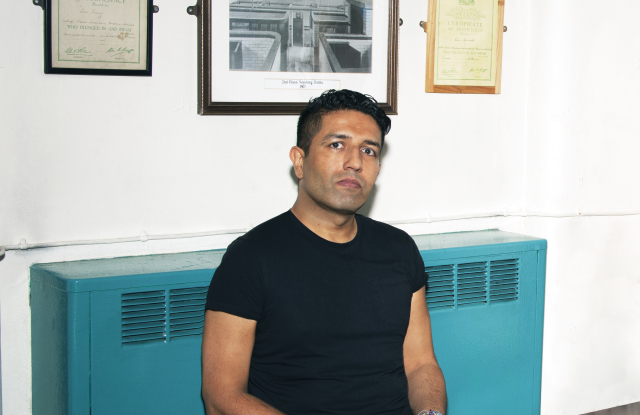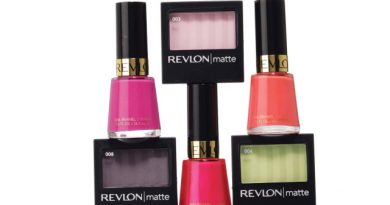Osman Yousefzada Talks Culture, COVID-19, Fashion’s Diversity Issues – WWD
LONDON — Osman Yousefzada always gives a good interview, even when he’s just talking about fashion and the clever tailoring, saturated colors and long, sweeping silhouettes for which he’s known. Right now, he has a lot more to talk about than fashion — or his next collection, which isn’t coming until September.
For a start, this interview was supposed to focus on his first book, “The Go-Between: A Memoir of Growing Up Between Different Worlds,” (Canongate) about his childhood spent in a tight-knit Muslim Pashtun community in inner city Birmingham, England.
As a young adult, Yousefzada would leave that community behind, get degrees in South Asian studies and anthropology at SOAS University of London; fashion at Central Saint Martins, and a Masters at Cambridge University.
“I always feel like this go-between: I come to London and to this glitzy, arty fashion world, and then I go back — nearly every weekend or every other weekend — to Birmingham and to this kind of ghetto, so it’s like navigating two different worlds. You don’t really feel like you’re accepted anywhere, to some extent,” he told WWD.
The coming-of-age book was supposed to come out later this year but, due to the coronavirus, was postponed until next spring, which has been a blessing, of sorts. COVID-19 flipped Yousefzada’s life upside down, and he may well have to add more chapters.
Last week, a much-anticipated report by Public Health England, a U.K. government department that seeks to address unequal health standards, showed that people who are Black and Asian are more likely to die from COVID-19 than their white British counterparts. The same groups have also been disproportionately impacted by the virus in the U.S.
In the U.K., being Black, or from a minority ethnic background including Chinese, Indian, Pakistani and Bangladeshi, is a major risk factor, along with age, occupation, sex (working-age males are twice as likely than their female counterparts to die from COVID-19) and living in deprived and densely populated urban areas.
Yousefzada, who is based in London and whose clients include women in the arts and media, experienced this firsthand: He watched scores of family, friends and elders from the old neighborhood fall victim to the virus. Like Yousefzada’s parents, most of the older generations are illiterate and don’t speak any English, having emigrated to the U.K. to work in low-skilled jobs.
His mother and sister were both hospitalized, and his sister was put on a ventilator. Both survived, but Yousefzada said the deaths in the community were particularly tough as quarantine measures prevented final Muslim rights from being carried out. Bodies were placed in plastic bags and the mosques were shut, so there were no places for communal mourning, or shared grief.
Asked why his family’s community was so disproportionately impacted, Yousefzada is quick to respond.
“It’s poverty, it’s poor diet and a lack of knowledge. It’s overcrowding and health issues, underlying health issues that make people much more vulnerable to getting the disease. A lot of these people are not in the best of situations. Out of necessity, households are combined. Maybe some family members work in really low-income jobs [in hospitals or care homes] so they’re more exposed,” he said.
“The world has been turned upside down. The industrialists and the bankers are all in their fancy homes, and the people who are keeping the economy going are actually these low-skilled workers from BAME [Black, Asian and Minority Ethnic Individuals] backgrounds,” Yousefzada added.
Of late, and due to the anti-racism protests in the U.K., Britain is coming under intense scrutiny for its colonialist past, and the sins of the British Empire. Statues of historic philanthropists and civic leaders who made their money in the slave trade have been toppling across the country as part of the Black Lives Matter movement. The government has condemned the violence, but there is no doubt that more statues will be pulled down, or be defaced.
Yousefzada pointed out that in the U.K., “model” minorities — the successful, high-achieving ones — are celebrated, as are rags-to-riches stories. “But how many rags to riches do you really get?” he wonders.
He has been caring for his mother and sister in Birmingham during lockdown, and despite the anxiety and grief at home and in the community, he describes the time away from London as an “amazing period of pause” personally and professionally. “It’s given us all a moment to reflect on how we really want this global economy to be,” he said. “If we don’t take this opportunity for change, I think we are really sad people.”
The designer, who is self-funded, was a step ahead of his peers in February, showing a film rather than a collection. Partnering with the Whitechapel Gallery, he hosted the screening of his short, “Her Dreams Are Bigger.”
The project was meant to highlight the importance of sustainability and shed light on the realities of fast fashion, consumption, sustainability, global supply chains and concepts of beauty, and was supported by Livia Firth’s brand consultancy Eco-Age.
After that experience, he said he’s unsure whether he’ll return to a conventional runway format.
“I think really the virtual world has become so important now, and it’s not going to go away.”
He wonders whether financial folks will still need their big fancy offices any more for impressing clients or whether they’ll hand the floor space back once lockdown eases.
“It’s nice to see a collection, but I think fundamentally we really all need to step back and slow down in many ways, to dismantle some of our institutions, the way we view business, and the way we consume,” said Yousefzada, who plans to continue his House of Osman creative studio concept, with pop-ups around London, special projects and writing.
He wants to do just two collections a year — as opposed to five; look closer at seasonality and sustainability, and at “knowing where our clothes come from.” He’ll still be working with some big retailers, and said his business model and infrastructure have been working well. In September, he’ll show 10 looks, and then do a big direct-to-consumer launch in February.
During the interview he also addressed fashion’s diversity problems, and the ones ingrained in his own culture.
“You still have this color-coding. Coming from South Asia, it’s massive. The higher the caste, the lighter you are, and the prettier you are. The darker you are you go toward the untouchable [caste]. Blonde hair and blue eyes are still the ultimate idea of beauty, and that needs to be addressed.”
With regard to fashion, “we all talk about diversity,” he said, but non-Western designers are too often viewed with an attitude of “exoticism, and not invited to the table really. You’re being represented somehow, but there is cultural appropriation and you’re not really part of the whole. We’re all seen as exotic beings, especially if we play with references from our own culture. But, it’s somehow OK for a Western brand to culturally appropriate these references.”





